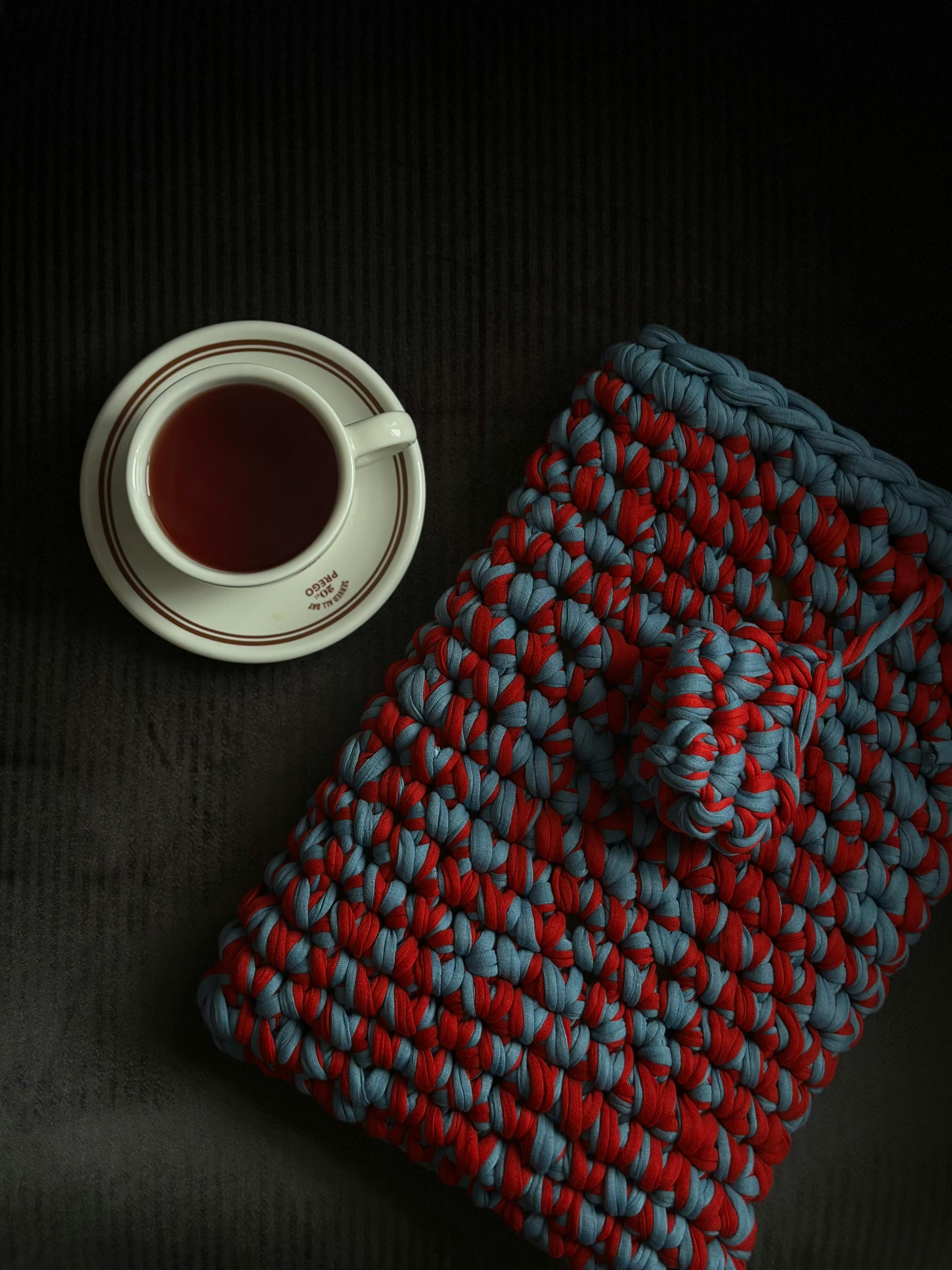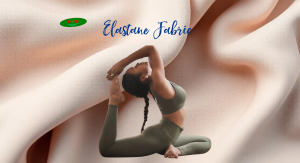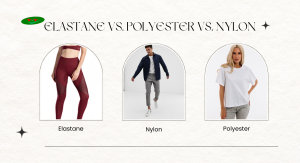Covered elastic yarn is a remarkable innovation in the textile industry known for its elasticity and versatility. Comprising a core of elastic material wrapped with another fiber, it enables garments to maintain their shape while providing comfort and flexibility. As fashion continues to evolve, covered elastic yarn has emerged as a vital component in creating high-performance fabrics, catering to a variety of applications from athletic wear to everyday clothing.
Benefits of Using Covered Elastic Yarn

The integration of covered elastic yarn into fabric design has revolutionized how textiles are produced and utilized. Here are some significant benefits that stand out.
Enhanced Stretch and Recovery
A primary advantage of incorporating covered elastic yarn is its remarkable stretch capability. Unlike traditional yarns, this innovative yarn allows fabrics to expand significantly without losing their original form.
Covered elastic yarn boasts excellent recovery properties, meaning that after being stretched, it returns to its initial shape effectively. This characteristic is particularly crucial in clothing designed for movement, such as activewear or fitted garments. The fiber’s ability to stretch without compromising structure makes it suitable for various applications, including sports uniforms, leggings, and dresses that require both style and functionality.
Moreover, the superior stretch of covered elastic yarn can enhance the overall appearance of garments. By ensuring that clothes fit snugly against the body while still allowing freedom of movement, it accentuates natural curves and provides a streamlined silhouette.
Durability and Longevity
Durability is another compelling benefit of covered elastic yarn. The combination of an elastic core with protective outer fibers provides not only support but also strength and resilience.
Garments made with covered elastic yarn tend to withstand the test of time better than those made with standard materials. They resist fraying, fading, and wear due to their robust construction. This longevity translates into cost savings for consumers, as they do not need to replace items as frequently.
Additionally, covered elastic yarn is resistant to the effects of environmental stressors, including UV light, moisture, and temperature variations. This means that fabrics produced with this type of yarn can maintain their quality even under challenging conditions, making them ideal for outdoor apparel and gear.
Versatile Applications in Textile Industry
The versatility of covered elastic yarn extends beyond just clothing. Its unique properties have made it a preferred choice in various sectors within the textile industry.
For instance, in the world of fashion, designers have embraced covered elastic yarn for everything from swimwear to athleisure. Its ability to provide a comfortable fit while maintaining stylish aesthetics has made it a staple.
In addition to fashion, covered elastic yarn finds utility in technical textiles. Industries focusing on manufacturing medical devices, automotive interiors, and home furnishings often rely on the stretch and durability of these yarns. This adaptability illustrates the broad potential that covered elastic yarn holds across diverse markets.
Comfort and Fit in Garment Construction
Comfort is paramount when it comes to clothing design, and covered elastic yarn excels in this area. Thanks to its inherent elasticity, garments constructed with this material can accommodate various body shapes and sizes, promoting inclusivity in fashion.
The fabric behaves like a second skin, providing wearers with exceptional ease of movement. Whether engaging in physical activities or lounging at home, individuals can appreciate the unrestricted feel offered by garments made with covered elastic yarn.
Furthermore, the smooth texture of covered elastic yarn allows for seamless garment construction, minimizing irritation and friction against the skin. Designers can create clean lines and well-fitted garments without sacrificing comfort, thus elevating the wearer’s experience.
Types of Covered Elastic Yarn

Understanding the types of covered elastic yarn available is essential for makers and designers who want to maximize their creative potential. Various material compositions, thicknesses, and aesthetic options allow for limitless possibilities.
Different Material Compositions
Covered elastic yarns come in several material compositions, each offering unique attributes that cater to specific needs.
Common materials include nylon, polyester, and spandex, which can be combined in different ratios to achieve desired levels of stretch, sheen, and durability. For example, nylon-covered elastic yarn is renowned for its strength and resistance to abrasion, making it ideal for high-performance sportswear.
Similarly, polyester-covered elastic yarn offers excellent color retention and fade resistance, enabling creators to produce vibrant, long-lasting designs. Moreover, spandex is well-known for its incredible stretch factor, contributing to the ultimate comfort and fit of the finished product.
Understanding these materials allows designers to select the right covered elastic yarn based on the intended use, whether for casual wear, formal attire, or specialized applications.
Varieties Based on Thickness and Texture
Covered elastic yarns are available in a range of thicknesses and textures, providing additional options for designers looking to achieve specific visual and tactile qualities in their creations.
Thicker yarns can lend added structure to garments, making them more supportive while still allowing for movement. These thicker options are often favored in athleisure and shapewear where added compression is beneficial.
Conversely, finer covered elastic yarns offer a lightweight, airy feel, perfect for delicate garments such as lingerie, activewear, or layering pieces. Textured yarns can add visual interest to fabrics, enhancing the aesthetic appeal of the final product.
Through careful selection of the thickness and texture, designers can manipulate how covered elastic yarn interacts with other elements of their creations, leading to stunning results.
Color Options and Aesthetic Considerations
Another compelling aspect of covered elastic yarn is the vast range of color options available. From bold hues to soft pastels, the color palette can greatly influence a garment’s overall look and marketability.
Designers can choose covered elastic yarns dyed in vibrant colors that stand out on the rack, appealing to consumers’ preference for eye-catching styles. Additionally, covered elastic yarn can also be found in intricate patterns and prints, fostering creativity and uniqueness in garment production.
It’s essential for designers to consider the aesthetic implications of their yarn choices. Selecting the right colors and patterns can elevate a garment from ordinary to extraordinary, capturing the attention of customers looking for distinctive pieces in their wardrobes.
Tips for Working with Covered Elastic Yarn
Working with covered elastic yarn can present unique challenges, but following best practices can lead to successful outcomes. Here are some tips to keep in mind.
Selecting the Right Needle and Thread
Choosing the appropriate needle and thread is critical when sewing with covered elastic yarn. For optimal results, it is advisable to use a ballpoint or stretch needle, which is designed to accommodate stretchy fabrics without causing damage.
Thread selection is equally important; opt for polyester or a specialty thread designed for elastics. These threads provide the necessary strength and flexibility to complement the stretch capabilities of covered elastic yarn, ensuring that seams remain intact during wear and laundering.
Take the time to experiment with different combinations to discover what works best for your specific project. Proper needle and thread choices can make a significant difference in the outcome, resulting in a professionally finished garment.
Recommended Stitch Techniques
When working with covered elastic yarn, employing the right stitch techniques is essential for achieving desired functionality and aesthetics.
Using a zigzag stitch or a stretch stitch helps accommodate the elasticity of the yarn, preventing breakage or misalignment during stretching. Straight stitches may not provide adequate flexibility, leading to seam rupture when the fabric is pulled.
Additionally, consider using a serger for clean, professional finishes. Serging allows for flexibility while simultaneously trimming excess fabric, ensuring that edges remain neat and tidy as well as reducing fraying over time.
Adjusting Tension for Optimal Results
Proper tension adjustment is vital when working with covered elastic yarn. Too much tension may cause the fabric to pucker, while insufficient tension can lead to loose seams that won’t hold up during wear.
Before starting on your main project, conduct tests on scrap fabric to find the best tension settings for your machine. This practice ensures that you achieve a balanced finish that allows the fabric to stretch evenly without compromising its integrity.
Pay close attention to any changes in fabric behavior as you sew. If you notice puckering or uneven seams, it may indicate that adjustments are needed to achieve optimal results.
Care and Maintenance Guidelines
To maintain the quality of garments made with covered elastic yarn, adhering to proper care and maintenance guidelines is essential.
Typically, machine washing on a gentle cycle and air drying are recommended to preserve elasticity and color vibrancy. Avoid harsh detergents and bleach, as they can break down the fibers over time.
It’s also advisable to store garments in a cool, dry place away from direct sunlight to prevent fading. By implementing these care practices, you ensure longevity and continued enjoyment of your covered elastic yarn garments.
Common Applications of Covered Elastic Yarn
The versatility of covered elastic yarn allows it to be utilized in various applications, ranging from fashion to functional textiles.
Activewear and Athletic Apparel
One of the most prominent uses of covered elastic yarn is in the design of activewear and athletic apparel. The fusion of stretch and recovery properties provides athletes and fitness enthusiasts with garments that support their movements.
From yoga pants to running shorts, the incorporation of covered elastic yarn ensures a snug, comfortable fit that enhances performance. This category of clothing requires materials that can withstand rigorous workouts while remaining breathable, and covered elastic yarn fits the bill perfectly.
Moreover, the moisture-wicking capabilities of certain covered elastic yarn blends help keep the wearer dry during intense exercise sessions. This combination of performance features has established covered elastic yarn as a staple in modern activewear collections.
Underwear and Lingerie Design
Another significant application of covered elastic yarn lies in underwear and lingerie design. The blend of comfort, stretch, and support is fundamental in creating intimate wear that meets consumer demands.
With covered elastic yarn, designers can craft pieces that contour to the body while allowing for freedom of movement. The decreased likelihood of chafing or discomfort makes these products highly desirable for everyday wear.
Additionally, the variety of colors and textures available in covered elastic yarn allows lingerie designers to explore dynamic designs, ensuring that intimacy wear is as attractive as it is functional.
Home Textiles and Accessories
Beyond apparel, covered elastic yarn has made substantial strides in the domain of home textiles and accessories. Items such as fitted sheets, pillowcases, and tablecloths benefit from the stretch characteristics of this yarn, providing better-fitting solutions that enhance usability.
In crafting accessories, the versatility of covered elastic yarn encourages creative exploration. From headbands to handbags, the combination of durability and aesthetic appeal opens avenues for unique design ideas that captivate consumers.
By incorporating covered elastic yarn into home textiles, manufacturers can improve the quality and longevity of everyday items, ultimately enhancing the consumer’s experience.
Medical and Support Garments
Lastly, the medical field recognizes the value of covered elastic yarn in producing support garments, braces, and compression wear. These items rely on the elasticity of the yarn to provide targeted compression and support for injured or weakened areas of the body.
Covered elastic yarn offers comfort alongside therapeutic benefits, making it an essential component in medical apparel. The ability to design garments that cater to individual body shapes while delivering effective support is invaluable in patient care.
As medical technology evolves, the use of covered elastic yarn will likely expand, paving the way for innovative solutions that enhance recovery and improve quality of life.
Conclusion
Covered elastic yarn represents a significant advancement in textile engineering, combining functionality with style across various applications. Its numerous benefits, including enhanced stretch and recovery, durability, and versatility, make it an invaluable tool for designers and manufacturers alike. Whether used in activewear, lingerie, home textiles, or medical garments, the impact of covered elastic yarn is undeniable.
As we delve deeper into the world of stretch fabrics, understanding the different types, working techniques, and applications of covered elastic yarn becomes imperative for anyone involved in the textile industry. With careful consideration and creativity, coupled with the remarkable properties of this yarn, the possibilities are endless.
As we continue to explore the boundaries of textile innovation, one thing remains clear: covered elastic yarn will undoubtedly play a pivotal role in shaping the future of fashion and functional materials for years to come.
Address: Thanh Hoa Hamlet, Thanh Dien Commune, Chau Thanh District, Tay Ninh Province, Vietnam
Mobile/whatsap: (+84) 984.841.239
Mail: sale@tanithread.com
Website:https://tanithread.com/



